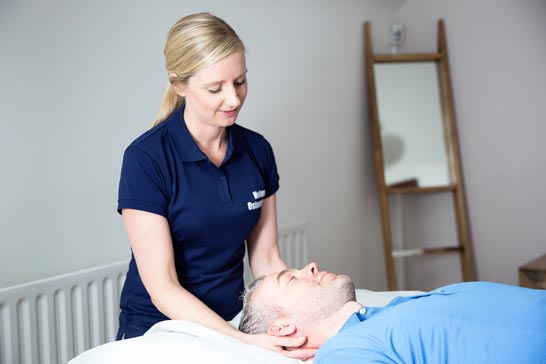10 Tips For A Healthier Working Posture
April 1, 2018
Steven

The evolution of technology has resulted in an increasing number of people performing job roles that involve stationary postures for extended periods throughout the day. It is no surprise therefore that postural-related issues are something our osteopaths deal with on a regular basis.
Whilst addressing your posture remains a potential minefield due to the endless types of equipment, treatments and advice that is available, we believe that adopting the following tips will help to ensure that you avoid postural-related issues and maintain a healthy lifestyle. Enjoy!
The best posture is your next posture!
Avoiding static positions for extended periods of time will reduce your chances of developing postural-related issues. Try to stand, stretch and reset your posture every 20 mins where possible.
Request a workstation assessment
If you are required to remain at a computer for long periods of time, the set up of your workstation is crucial to ensure that you don’t place excessive stress on your body. Your employer may be able to provide you with information on the optimal workstation set up.
Exercise and activity
Due to the increasing number of job roles that are often sedentary in nature, this places an emphasis on ensuring that we are physically active in the times that we are not at work. Find something you enjoy and go for it!
Reduce your stress levels
Stressful job roles increase our chances of retaining muscular tension and adopting non-optimal working postures. Try to look into meditation-based techniques, such as breathing exercises, to help you cope with your busy workloads.
Adjust your monitor height
Your monitor height is crucial to preventing excessive stress upon your neck and shoulder muscles. Generally speaking, the top of your screen should be level with your eye line for ‘normal’ typists, whereas if you are lucky enough to not have to look at your keyboard when typing, the monitor should be positioned so that your eyes are at mid-screen height.
Sleep
The process of obtaining enough sleep is essential to ensure that our bodies can repair and rest themselves in preparation for the day ahead. See our blog below to help you clock up the hours that you need!
Feet on the floor!
Your feet should always be in contact with the floor when in a seated position to avoid excessive pressure on your legs and lower back. Avoid sitting on your feet, crossing your legs or letting them swing from your chair. If your feet don’t reach the floor, try using a footrest.
Re-position your equipment
Overstretching for your mouse or phone may cause unnecessary stress on your muscles and joints. Reposition your items so that they are within arms length in a seated position.
Pause and refresh
As the day wears on and we become increasingly tired, it is common for us to adopt a poor posture, should as slouching in your chair for example. Try to ensure that you take the time to refresh your posture regularly – sit up properly in your chair, bring your tummy close to the desk and relax your shoulders!
Don’t ignore your aches and pains
If you are experiencing postural-related issues then don’t ignore them. Pain is your body’s way of telling you that something isn’t right and at this point it may be appropriate to be assessed by a qualified expert in order to help with your issues.
If you require any advice about the above, or are experiencing postural-related issues, then please don’t hesitate to contact us.
Thanks for reading!





